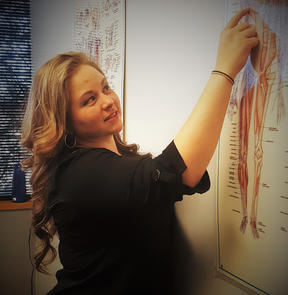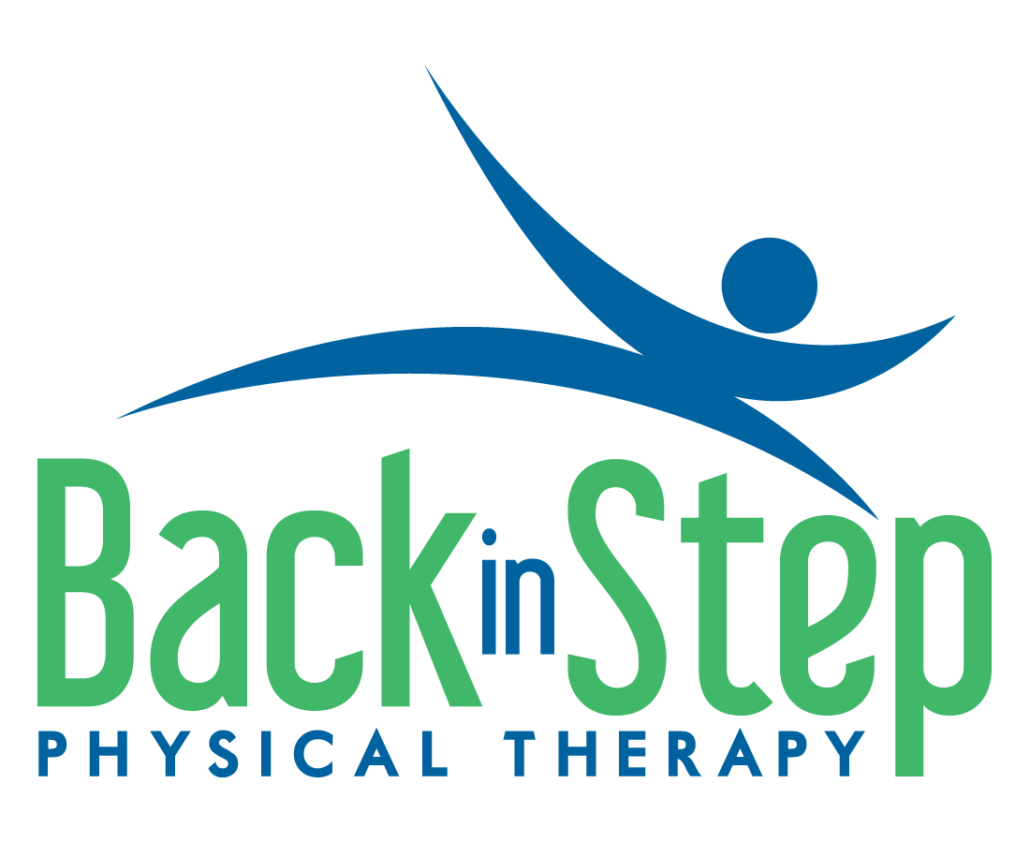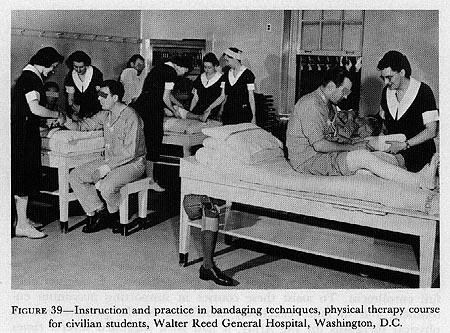Physical Therapists: The Movement Specialists (Part 2)
In a previous post, I discussed the overall education of a physical therapist (PT), starting from the pre-requisites with a Bachelor’s degree, all the way through taking the National Physical Therapy Exam (NPTE) and becoming licensed as a practicing physical therapist. I now want to tell you more about what happens after school, whether it’s pursuing an area of special interest, or obtaining a board certification.

Areas of Specialty or Special Interest
Now that you have a better understanding of the training to become a physical therapist, let’s talk a little bit more about where it can go from here. It’s safe to say that most people are aware that PTs can work with sports injuries, like a soccer player with an ACL tear. But did you know that PTs can also treat women during and after pregnancy, particularly for pelvic floor and incontinence problems, or perform wound care for people who aren’t healing properly?
Here are some areas for specialization, according to the American Physical Therapy Association (APTA). These may be areas for additional study or specific interest, and several have an option to obtain a board certification (more on this later).
- Acute Care
- Therapists work in a hospital, and may treat those who have had a new knee replacement, who is recovering from a major accident or illness, or who is in the Intensive Care Unit (ICU), as a few examples.
- These therapists work hard to decrease length of time in the hospital, increase a patient’s independence while maintaining safety, and help prepare a patient to go home, or on to another level of care, such as a skilled nursing facility or acute rehab hospital.
- Aquatics
- Therapists treat patients while in a pool. The pool is a great place to take away some body weight, but can also add resistance by pushing through the water.
- This can be great for people who maybe can’t tolerate doing as much on land.
- Cardiovascular & Pulmonary
- Therapists work with patients with an array of cardiopulmonary diseases, like chronic obstructive pulmonary disorder (COPD), coronary artery disease (CAD), or congestive heart failure (CHF), to name a few.
- These therapists provide health, wellness, prevention, and rehabilitation services for those already diagnosed or for those who are at risk.
- Clinical Electrophysiology and Wound Management
- Therapists use different techniques, equipment, and other resources to help treat, heal, and/or prevent wounds. These wounds typically result from pressure, trauma, surgery, vascular disorders, and diabetes.
- Education
- Therapists choose to focus on the academic side of things, helping to promote the development of future therapists, as well as the progress and growth of their education. This can include education in the classroom or in the clinic.
- Federal
- Therapists work with Federal medical services, either as a civilian, as a member of uniformed service, as contractors, or as tribal hires. Their work can include the entire span of services, dedicated for the military and/or other government services, like Public Health Services.
- Geriatrics
- Therapists focus on the aging and geriatric population, and are well versed in the healthcare management of an older adult.
- Hand and Upper Extremity
- Therapists focus on the treatment and prevention of problems related to the hand and upper limb (elbow, shoulder, and related regions).
- Health Policy and Administration
- These therapists are involved in leadership, administration and management, global health, and technology in physical therapy. They also focus on professionalism and advocacy for the profession.
- Home Health
- Therapists treat their patients within the home setting, rather than having the patient come in to a clinic. Patients in the home setting may have access issues to healthcare, or may have limited mobility, making a trip elsewhere much more difficult.
- Neurology
- Therapists work with a variety of topics related to neurologic disorders and rehabilitation, which includes things like balance and falls, brain injury, spinal cord injury, stroke, and vestibular rehabilitation.
- Oncology
- Therapists work with those currently undergoing treatment of or rehabilitating from cancer, tumors, HIV, etc., and can include lymphedema management.
- Orthopedics
- These therapists focus on rehabilitation and prevention related to muscles, bones, and joints. Therapists can further specialize in imaging (like x-rays, MRIs, etc.), pain management, and occupational health (workers’ compensation), to name a few.
- Pediatrics
- Therapists treat patients from birth to 21 years, including all children, people with developmental disabilities, as well as their families.
- Private Practice
- Therapists are involved in owning and managing their own business as a physical therapist.
- Research
- These therapists are particularly interested in doing research to improve patient care, techniques, and the profession.
- Sports
- Therapists work with a spectrum of athletes, from little leaguers to Olympic athletes, from swimmers to hockey players, and everyone in between.
- Women’s (and Men’s) Health
- Therapists treat pelvic floor and abdominal problems, including pregnant women, athletes with incontinence issues, or men with pelvic pain, for example.
Physical therapists may work as generalists, treating a large variety of people that require care, or may choose to specialize in what they treat. Some may treat people across several of the topics listed above. Either way, you can find a physical therapist that can provide treatment for you, regardless of age, gender, health condition, accessibility, or diagnosis!
Board Certification in a Specialty Area
Board certification is an additional step that some therapists decide to take. Typically, there is a minimum of 2,000 hours treating patients in the specific area in which you’re looking to specialize. Once that number is achieved, and an application is submitted, you’re application must be accepted. Then, you spend many hours studying for an exam that will cover around 200-250 questions over the span of 7 hours. Much like the NPTE exam to get your initial therapy license, these specialty exams can cover virtually anything that applies to your specialty area, so your breadth and depth of knowledge are thoroughly tested. This exam, however, takes about 3 months or so to get the results. If you’ve passed, you now get to use the specialty designation for your board certification. There are currently 8 areas available for certification, including Cardiovascular and Pulmonary, Clinical Electrophysiology, Geriatrics, Neurology, Oncology, Orthopaedics, Pediatrics, Sports, and Women’s Health, with over 20,000 therapists certified. There are also options to pursue residencies and fellowships, which provide additional training and mentorship in a specific area of specialty, and typically include a board certification process as described above.
Continuing Education
Aside from pursuing specific topics like those listed above, physical therapists also have a requirement to complete “continuing education”. The requirements vary state to state, and there may even be requirements for a specific job, but it’s always the same basic concept. There are frequent opportunities to continually work on our knowledge base. Such opportunities could include learning more about pilates mat exercises and how to apply them to patients in the clinic, getting the latest research on the rehabilitation of a total knee replacement, or obtaining certification to perform trigger point dry needling.
In Summary
Even beyond the physical therapy license, many physical therapists choose to pursue additional education and training. This may include residencies, fellowships, or board certifications for some. For most therapists, it’s periodically attending courses or conferences to learn skills that will ultimately help their patients. I know that, at least for myself, I’m always eager to take more classes. I’m convinced that with each class that I get to cross off of my list, I add 3-4 in its place. There is always something new and exciting to learn, and that’s just another thing that I love about my profession!

Article author, Alyssa Arms, PT, DPT, OCS holds a Doctor of Physical Therapy (DPT) degree from the University of Colorado Anschutz Medical Campus, and later obtained a Board Certification as an Orthopedic Clinical Specialist (OCS). She is also the President and Owner of Back in Step Physical Therapy in Centennial, Colorado, and is an instructor at her PT alma mater.



